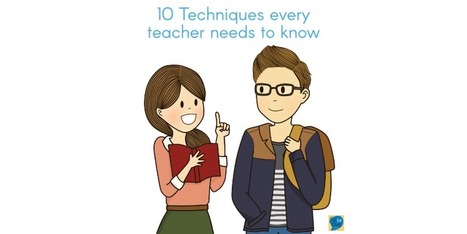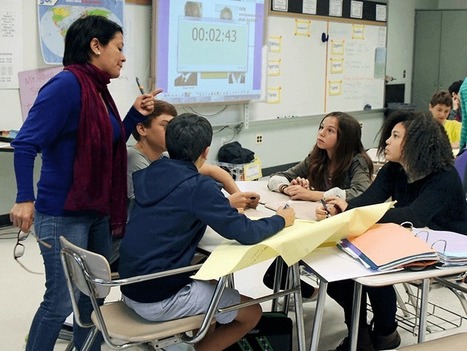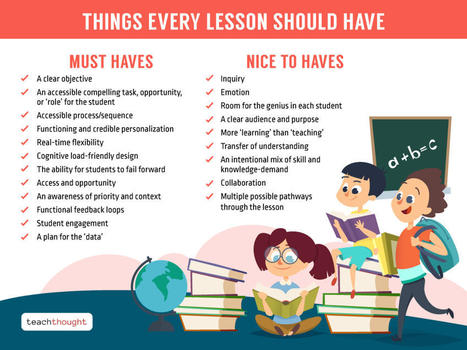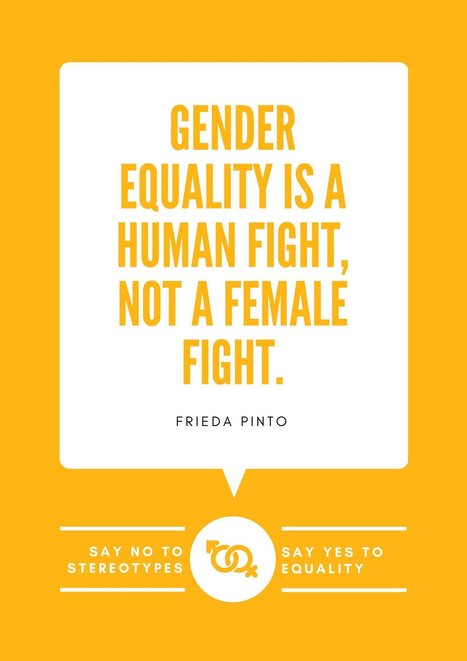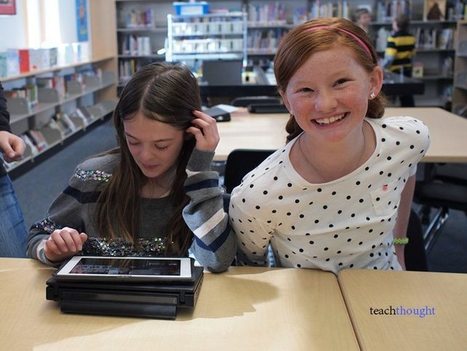Using Wikipedia in the classroom has been shunned traditionally by some teachers because it is written by volunteers on the internet. But it is precisely that crowdsourced nature that makes Wikipedia such a compelling tool in the classroom, says Nichole Saad, senior program manager for education at Wikimedia Foundation, the nonprofit that owns Wikipedia.
Get Started for FREE
Sign up with Facebook Sign up with X
I don't have a Facebook or a X account

 Your new post is loading... Your new post is loading...
 Your new post is loading... Your new post is loading...
Current selected tag: 'teaching strategies'. Clear
A sense of community fosters a sense of belongingness and is critical to student engagement. Building a sense of community is a first step in ensuring that students are engaged in their classes, especially for historically minoritized students (Pacansky-Brock et. al 2020; Plotts 2019; Brown and Burdsal; 2006, Rovai and Gallien; 2005; Tu & Correy, 2002). To structure a class that includes everyone and promotes student engagement, we need to think about what goes into building a community and what that can look like when teaching online.
Universal Design for Learning (UDL) is an education framework that helps teachers support students across that span of the student experience. I
"A team of teacher educators dug deep to find out how teachers motivated themselves to meet the challenges of remote learning during COVID" Via EDTECH@UTRGV
The Benefits of Developing a Reflective Routine
The Edvocate and The Tech Edvocate are proud to announce the launch of our new site, Pedagogue, a social media network where educators can learn and grow. It’s a safe space where they can share advice, strategies, tools, hacks, resources, etc., and work together to improve their teaching skills and the academic performance of the students in their charge.
With video in learning one can feel as though one is learning, as the medium holds your attention but as you are hurtled forward, that knowledge disappears off the back. It’s like a shooting star; looks and feels great but the reality is that it burns up as it enters the atmosphere and rarely ever lands.
As the associate director at Tulane’s Center for Engaged Learning and Teaching (CELT), I work with faculty to help them transform their classrooms into more engaged spaces. One way to do that is by creating opportunities for interaction between the professor and the students and between the students themselves. I always start the conversation on this topic with three questions:
I’m a big fan of books and articles that condense years and years of hard-earned experience into a few clear tidbits of advice that anyone can benefit from.
During the course of our work at CILT, we produce resources to facilitate and support teaching and learning at UCT. While these are not specifically produced for formal publication, they are often useful to others. They are shared in various formats in the following areas: Teaching & Learning Strategies; Engagement & Participation; Multimodal Ways of Teaching & Learning; Assessment; Enabling Teaching; Being an Online Scholar or Student; and The Curriculum.
For Common Core resources, teacher videos, strategies and lesson plans, go to Teaching Channel. Find great ideas and strategies in classroom teaching videos covering Math, Science, English, History and more.
What’s the best way to learn more efficiently? Adopting proven learning techniques like practice testing and interleaved practice is important, of course, but research shows that, on the whole, introducing novelty is one of the best ways to stay motivated and learn more effectively.
15 Reflection Strategies To Help Students Retain What You Just Taught Them by Terry Heick Reflection is a natural part of learning. We all think about new experiences–the camping on the car ride home, the mistakes made in a game, or the emotions felt while finishing a long-term project that’s taken months to complete. Below … Via Ana Cristina Pratas |
What should every lesson have? Via EDTECH@UTRGV 
EDTECH@UTRGV's curator insight,
June 23, 2021 12:23 PM
Great list! It really provides food for thought on how I'm developing my lessons.
A bunch of black boxes on a video call. An empty discussion board. A student who hasn’t submitted any work all term. These might all be signs that students aren’t engaged with their online learning. But they also might be signs that students don’t have enough Internet access to participate in their online classes; they might be signs that students don’t know how to engage with their online learning; or they might be signs that students don’t feel included in their online class.
A part-time professor is one of many at Point Park taking innovative approaches to boost student engagement during COVID-19. Via EDTECH@UTRGV
Individuals vary in their views of what students should be taught. How should teachers discuss the misdeeds of a nation’s founders? What is the minimum accomplishment expected of each student in mathematics? But there is no disagreement on the importance of critical thinking skills. In free societies, the ability to think critically is viewed as a cornerstone of individual civic engagement and economic success.
One of the perks of teaching online is that there are so many great tools that make facilitating an online course easier. For example, not having to manually grade and enter grades for online exams since most learning management systems can automatically evaluate student responses and submit scores to a gradebook without the instructor needing to do a thing.
I have been teaching various levels of reading skills and composition to native and non-native speakers, to immigrants and U.S. citizens, to people with talent and interest, and I have one thing to say:
Using immersive technology, student nurses can perfect their stitches and criminals see the consequences of their actions. In this post, I explore today’s practical applications of virtual and augmented reality (VR and AR) to see how it may benefit education.
Keeping up with national and international events was a lot easier when all the news came from one of three major TV news outlets and a few newspapers like The New York Times. Now, there are dozens of channels, hundreds of newspapers, thousands of bloggers, and tens of thousands of social media journalists -- all trying to get your attention with the latest apocalyptic news flash. Stories based on gossip as much as fact used to be designated yellow journalism. Now, in what has been called a post-truth society (defined by Oxford Dictionary as “Relating to or denoting circumstances in which objective facts are less influential in shaping public opinion than appeals to emotion and personal belief"), it is the reader's responsibility to differentiate between fact and fake news. Here we will look at some teaching strategies to help you do just that.
A math instructor was using teachings strategies to introduce her class to the joy of statistical analysis. But instead of teaching strategies like presenting a dry formula and then giving dozens of sample problems for students to apply the formula on, she gave a little twist: She shared three carnival games and asked students to figure out which game gave them the best odds of winning. She asked, “If you had to choose one game to play, which one would you choose based on your application of this math?”
When appropriately implemented, blended learning can be the key to better-skilled employees, happier customers, and more productive channel partners.
Elizabeth E Charles's insight:
Also applicable to students and education setting.
How do we create a world free from gender-based discrimination? Start by raising children who respect one another as individuals and question the traditional roles they’re assigned as boys or girls. Educators are uniquely positioned to show students they have a choice when it comes to forming their own identity, and to highlight the many illusions and traps society has laid before them that prevent equal opportunity in their personal and professional lives. It’s time to give gender equality the place it deserves in our curricula, from the fine arts to the hard sciences and from kindergarten to secondary school and beyond.
Ed note: This post is promoted by SEU’S online masters in education programs. SEU simply asked us to write about how learning is changing and the updated kinds of things teachers need to know, and to let you know about their program. So here we are. |












